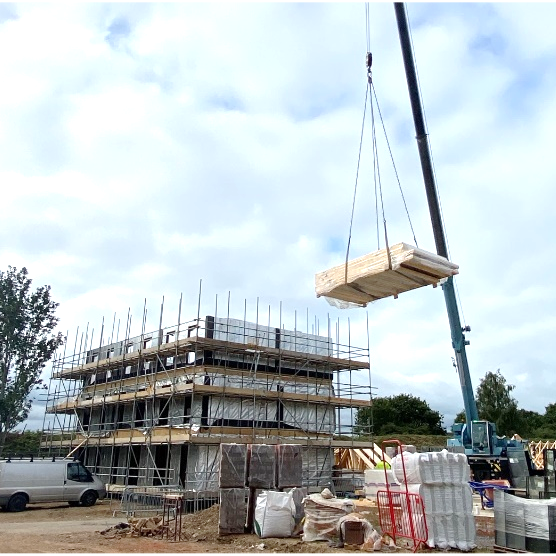Priddy's Hard
Updated: 14 October 2024
Location: Gosport
Developer: VerdeGO Group
Number of units: 21 Terraced and Semi-detached Houses
Aim(s) of Project:
Demonstrate benefits of MMC construction throughout the building process along with PV, Battery Storage, Infra Red ceiling mounted heating panels with fractional hot water cylinder using AI functionality produces low energy zero carbon homes that outperform SAP and EPC that are a cheaper to run and maintain and as an alternative to ASHP
Construction method: Advanced Closed Panel CAT2 Timber Frame, Insulated offsite manufactured raft foundations with brick façade
Energy Compliance method: SAP 10
Overheating compliance method: -
Construction start: January 2020
Construction finish: May 2021

Overview of Project and Specification
The aim of the project is to demonstrate benefits of MMC construction throughout the building process along with:
- 4.5kWp photovoltaic panels,
- 6.5kW battery storage,
- Infra Red ceiling mounted heating panels
- Smart fractional hot water cylinder (fed from the PV)
- AI functionality
The battery storage and AI give the ability to load shift to off peak times offering the opportunity for grid Demand-Side Response.
The hypothesis is that this will perform better than “predicted” in SAP and in practice could be cheaper to run and maintain than an air source heat pump.
The fabric uses Cat 2 closed panel timber frames were supplied by VerdeGO Timber Frames with a wall U-value of 0.17 and a designed airtightness of 5m3/hm2@50Pa. Intermittent extract ventilation is used.
More information
Link to video:
Mixergy and VerdeGO group are delivering innovative net zero homes to drive down carbon
Contacts:




Key learnings
- Infra-red is simple to install and removes work from the M&E package. All work carried out by electricians.
- Customers are very accepting of AI. Most people are using the “Agile” Octopus tariff.
- AI is commissioned by Wondrwall.
- No moving parts and no maintenance required by occupants or trades.
- Mixergy smart cylinder is easy to instal and use.
- Have not had to change fabric performance to obtain better performance.
- This specification avoids the need for MVHR. Having installed MVHR in the past VerdeGo find Intermittent Extract Ventilation easier to instal, easier to use and requires less maintenance.


